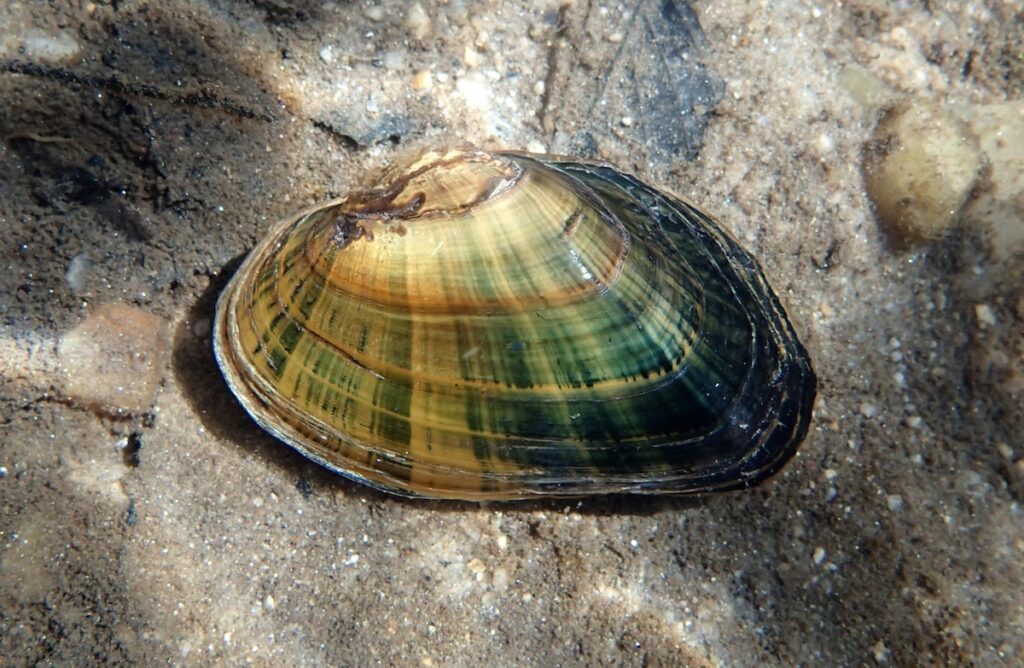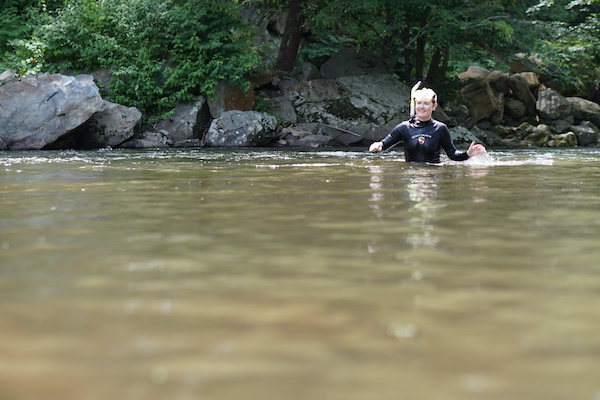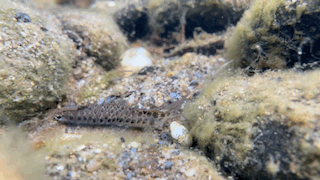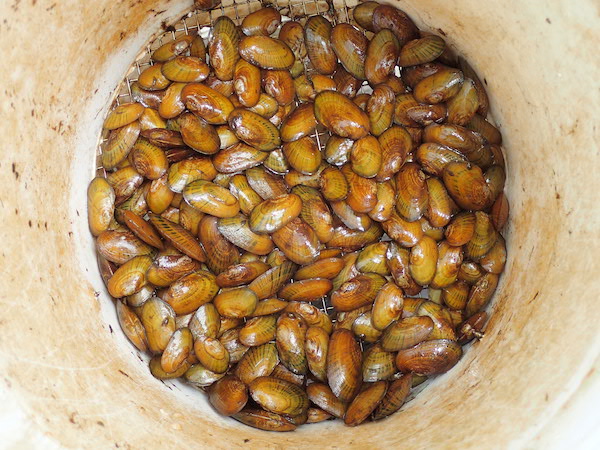Mommy Mussels and the Breathing Rocks
Freshwater mussels breathe our rivers clean. A new investigation aims to uncover the truth about why mussels are mysteriously dying off — and how to protect these important river creatures.

Today is the kind of workday I live for — a day not just on the river, but in the river. I slip on my snorkel and mask and lay prone in the stream, relaxing, breathing and watching. I see small fish — called darters because they dart around the bottom of the stream — looking for food. There’s another, then another. That’s when I realize, I’ve been tricked!

What I thought was a fish is actually a freshwater mussel with its fishing lure out. It looks exactly like the darter I just saw. I stop and watch. The mussel beats the lure rhythmically for a few seconds, then it stops. Then again for a few seconds, then stops. Not too different from how I learned to jig a worm on a fishing line as a kid. This freshwater mussel so perfectly mimicked a fish that it tricked a freshwater mussel biologist. A playful reminder to stay humble.
Female mussels are master anglers, crafting their young into packages that look exactly like a favorite snack of larger local fish species — in this case, a darter. When predatory fish take a nibble, the baby mussels are elegantly transferred to the gills of the host fish, a necessary step in the progression of baby mussel to adult mussel. After a few weeks, the now-mature baby mussel floats off the fish gill, maybe near mom, maybe a ways away, and gets down to the business of breathing the river.
Breathing is what freshwater mussels do best: They inhale water full of algae, bacteria, and sediments, and exhale clean water. They literally breathe our streams clean.
Freshwater mussels once paved most streams, especially in the South, breathing and filtering the water. Now, these incredible, indispensable creatures are in trouble. Eight were recently officially deemed extinct from Southeastern rivers alone. Why? Mussels took a big hit when big-river dam-building boomed in the early 1900s. Thousands of miles of river were flooded behind dams, the flow of water slowed, and river bottoms were buried in layers of muck. Mussels, which need to siphon moving water to breathe, couldn’t tolerate the entombment and died.

That’s partly why we work hard at American Rivers to remove dams — so that rivers, their mussels, and all the life that depends on clean, free-flowing water can thrive again.
But an alarming new phenomenon is taking hold. In places untouched by dams, we have started seeing mussel populations blip out for no apparent reason. In the Little Tennessee River, the federally endangered Appalachian elktoe mussel could be found by the thousands before 2004, but now biologists are lucky to find four individuals after hours of searching — and those they find are small, and pale, and sickly looking. Some mussels can live to be a century old, but mussels like the Appalachian elktoe live less than two decades. This means that we don’t have a century to figure out what’s going on and make changes — we have a fraction of that time. This urgency has motivated mussel biologists, like me, to find out why the die-offs are occurring — so that we can figure out how to stop them.
Thanks to investment by the BAND Foundation and Merck Family Fund and expertise of the US Forest Service’s Southern Research Station, American Rivers is bringing together the best minds working on freshwater mussels in a three-year investigation into why we’re losing our stream filterers. With partners across 13 states, this unprecedented study assesses the enigmatic decline of freshwater mussels to inform a science-backed solution to protect mussels — the lungs of the river. Our initial learning shows that freshwater mussels might be facing their own pandemic of sorts. If we don’t act quickly, we could lose more species within a generation.

Several species already live in captive “ark” populations — the last known living of their species. Such populations are waiting for critical habitat to be restored, waiting to breed new baby mussels for reintroduction, or waiting to die off. I recently visited an ark population of Tar spiny mussels hosted by the North Carolina Wildlife Resources Commission. These very old mussels with eroded shells unceremoniously languished in a retrofitted shed, recirculating water bubbling in and out of their black-plastic basin home. I was struck with grief to see these individuals — the last known of their kind — because we don’t yet know how to bring their kind back to health. Nor do we have suitable habitat where they can thrive.
The loss of nature and the accelerating decline of species are emergencies — and none are as severe or as unseen as the loss of freshwater mussels. But action is a good antidote to grief. The science our study uncovers could change how we manage and regulate rivers — and that could change the course for freshwater mussels.



